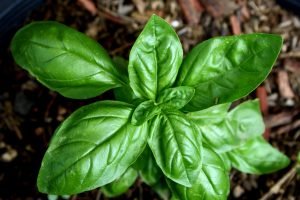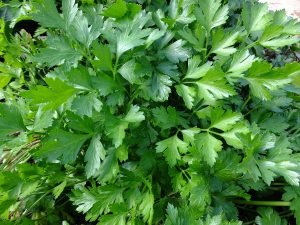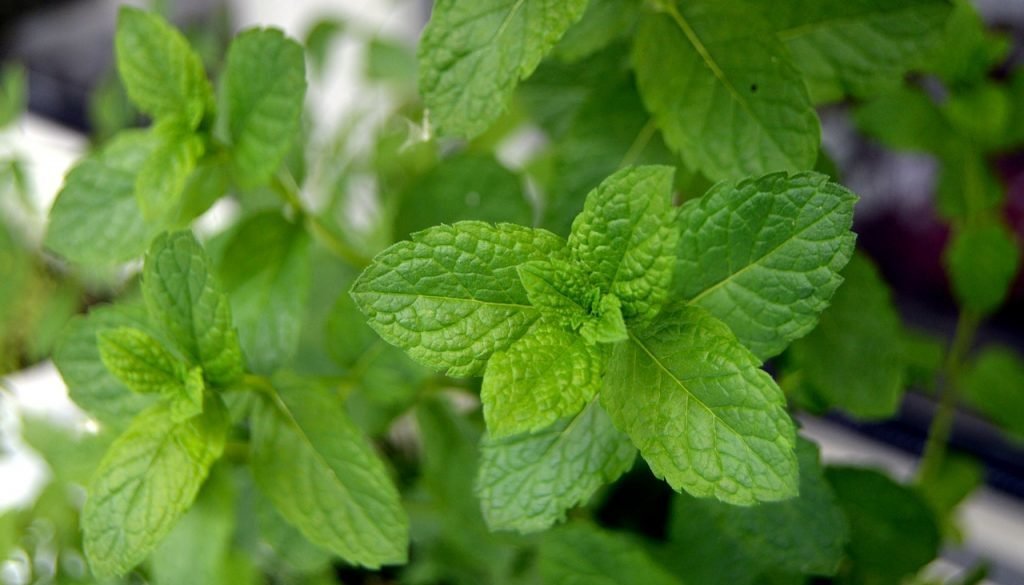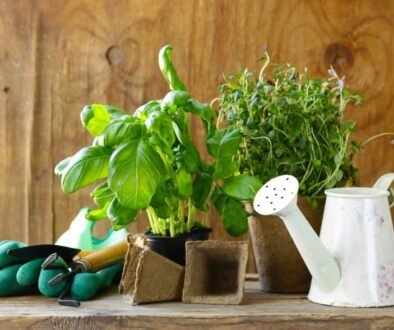What do you know about aromatic plants?
Under the term aromatic plants we group very different species in terms of characteristics and needs, but all have in common the production of essential oils, which makes them fragrant plants that perfume our gardens, homes and terraces. Rosemary, thyme, sage or lavender are some of these plants. The production of these essential oils takes place during the night, being released throughout the day.
Aspects that will make our aromatic plants a success
However, each of these plants has its own characteristics that differentiate it from the others, requiring special care, so we will give you a small review of each of them with some maintenance tips:

Basil
Basil is a branched and woody plant that is favoured by the warm climate, helping it to grow very quickly. Its smell floods the house during the summer and if we keep it well, we will have a constant supply of basil for our kitchen (which by the way is quite expensive to buy). It is sown from seeds, planted in well-drained soil with good exposure to the sun when there is no cold weather, and watered twice a day during the first few days. When it grows, be sure to pick the leaves often to encourage growth.

Dill
Originally from Asia and the Middle East, dill is a plant with an intense smell, similar to parsley or fennel. It grows best in a temperate climate, although it can withstand a hot climate if the soil is kept cool and moist. The soil must be permeable and well nourished, since dill does not tolerate dry soil. Plant it in spring or summer, away from frosts and low temperatures.

Mint
Mint stands up well to adverse weather, making it an ideal plant for first-time growers. It is usually planted between May and June, providing two or three harvests throughout the year, quite a lot considering the little care it requires. Mint is an invasive species, so it is better to grow it alone and leave it its own pot.

Oregano
The indispensable spice in the kitchen, with a unique and characteristic fragrance. If you plant it in autumn, do it in pots or seedbeds, while in spring you can plant it directly in the ground, leaving 20 cm distance with the rest of the plants. Although it bears frosts well, oregano needs exposure to the sun and a well-drained soil, avoiding waterlogging. When you harvest, cut the bush in half or less without worrying, the plant will sprout again.

Parsley
Originally from the Mediterranean area, parsley is one of the most widely used aromatic herbs in the kitchen, so every cooking lover has it planted in their garden. It adapts to any type of soil, although it prefers them fresh, rich in humus and well fertilized. It also resists almost all climates, although it adapts better to warm ones. It is usually planted from February to September, and its watering must be constant but in small quantity, to maintain the humidity conditions.

Rosemary
Typical of our Mediterranean climate, rosemary is a plant that prefers exposure to the sun (although it tolerates intense cold well) and grows well even in poor soil. If we have planted it in outdoor soil, it only requires water in case of a prolonged drought. If we have planted it in a pot, it is preferable to have it in semi-shade, so the heat does not damage the plant at root level, and we will water it regularly allowing the substrate to dry out completely between waterings. Fertilize them weekly with organic fertilizer between March and June and they will look spectacular.

Thyme
Thyme is a plant that requires constant exposure to the sun and doesn´t tolerate waterlogging. It reaches 20 cm in height and has many different applications (potting, gardening, orchard…). Thyme is a plant that is multiplied by seeds, by cuttings or by division of the bush. We recommend you to repot it in spring and prune it when the plant runs out of leaves at the base, in a temperate period like spring or autumn.

Sage
The sage is typical of the lower Mediterranean mountains, with oval-shaped, hairy, grey leaves, which contrast with the violet flowers that make them easily recognizable, reaching 60cm in height. This plant needs little time to form a good compact shrub and prefers poorly fertile and drained soils, so if your garden does not meet these characteristics, you can plant them in a 20cm pot without problem, using a good substrate. Always keep it in the sun and put your pots in the house if there is a risk of frost. Prune it up and down in winter to keep it full of vegetation. The sage is multiplied by planting terminal cuttings without flowers of about 10cm, planted in a mixture of peat and pearlite.

Lavender
The aromatic plant par excellence. It is perennial, so its leaves are not renewed annually, and is capable of reaching 1.5 meters in height. For its cultivation, lavender needs an alkaline substrate and good drainage, so a sandy soil is recommended. This aspect is fundamental, since the roots of lavender do not tolerate waterlogging, especially in winter. If you plant it in a pot, make sure it has a diameter of no less than 30 cm, and do not plant it too close to other plants, so that it enjoys good aeration and direct sun (about 6 hours a day). The ideal is to water it once a week (always with the substrate dry before doing so) and without wetting its leaves or stems, so that fungi do not proliferate.
We hope that this advice will be useful to you if you decide to plant any of these plants in your garden and remember that at Agrojadín we have everything necessary for their cultivation, as well as the best advice from our staff.
We are waiting for you!



